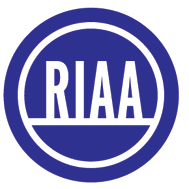 The RIAA continues to keep its war with broadcast radio at a high-pitched level. Recently the CEO of the RIAA, Mitch Bainwol, applauded the XM/Sirius merger as "a powerful validation that competitors should play by the same set of rules. On the heels of this decision, the logic for a performance right for terrestrial radio has never been clearer." Wait – because the DOJ says that satellite radio competes with terrestrial radio, AM/FM stations should pay the same copyright royalty?
The RIAA continues to keep its war with broadcast radio at a high-pitched level. Recently the CEO of the RIAA, Mitch Bainwol, applauded the XM/Sirius merger as "a powerful validation that competitors should play by the same set of rules. On the heels of this decision, the logic for a performance right for terrestrial radio has never been clearer." Wait – because the DOJ says that satellite radio competes with terrestrial radio, AM/FM stations should pay the same copyright royalty?
Bainwol should also check out the ratings if he wants to compare the impact of satellite versus terrestrial. In most markets, XM and Sirius earn small shares of listening (divided, of course, by the 200 stations they offer), while AM and FM stations capture the big box shares recording artists need to sell their product. Label execs know the difference in how a song/album sells in markets where the big FM stations add their product – or opt not to play it.
There’s nothing level about this playing field. Satellite radio has struggled to reach 18 or 20 million consumers, while hemorrhaging money every year it has been in existence. It needed this government sanctioned merger in order to stay afloat. Terrestrial radio continues to reach 90-something percent of the population, while always been profitable, ubiquitous, and a sure-fire way to reach America, locally and nationally.
How can he compare the benefits that recording artists reap between satellite and AM/FM radio? It’s logic like this that underscores why the recording industry finds itself in so much trouble, as its business model has been totally eroded by new media and empowered consumers.
AM/FM radio has been the best friend to recording artists over the past 50 years. The basic symbiotic relationship has always been very simple (payola aside). The recording industry provides free product to radio, and radio provides the lion’s share of the airplay exposure and promotion. When labels actually paid for advertising schedules on radio stations, the game had elements of being fair.
Today, radio continues to provide free and enthusiastic airplay for artists, new and old alike. When an artist comes to town, stations in the same format fight for the "presents," providing hours of free advertising time promoting the recording industry’s brand names. When a respected DJ tells his thousands of listeners that the new Foo Fighters album is the real deal, it means more than a bunch of spins on any XM or Sirius channel. And in the case of Rock radio, to be sure, the artists often snub local stations, content that their music will be played, and their concerts will be promoted, whether they show up for an interview or not.
The recording industry has problems, to be sure. But biting the hand that has so happily fed it all these years continues to remind us just how clueless the RIAA truly is. If anything, you might envision the RIAA approaching radio to find ways that two old institutions might work together to achieve each other’s common goals. Instead, the RIAA has become a toothless tiger, trotting out bizarre research studies, chasing after 14 year-olds, and issuing statements like the one Bainwol just made.
How much radio has added to the coffers of recording artists over the years is incalculable.
- What To Do If Your Radio Station Goes Through A Midlife Crisis - April 25, 2025
- A 2020 Lesson?It Could All Be Gone In A Flash - April 24, 2025
- How AI Can Give Radio Personalities More…PERSONALITY - April 23, 2025




Leave a Reply